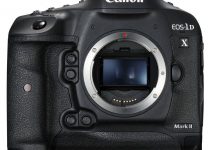While the first batch of Pocket 4K cameras is slowly trickling across the globe, the early adopters who have pre-ordered the unit right after NAB 2018 are already getting their hands on the long-awaited offering.
Meanwhile, the crazy hype surrounding Blackmagic’s latest product continues to grow exponentially. With the multitude of neat video features available on board and extremely appealing price tag, it couldn’t be the other way around, right?
Now, let’s take an inside look of the Pocket Cinema Camera 4K’s inner-workings and go over the hardware and software features the newcomer provides in the full walkthrough video produced by Jake Ratcliffe of CVP below.
In terms of physical design and ergonomics, Blackmagic seems to have done a decent job with the Pocket Cinema Camera 4K. Even though the unit itself is bigger than most mirrorless cameras, it’s actually lighter than its design may appear, plus it has a superb grip that feels great in your hand.
Looking at the front of the Pocket 4K, you’ll find the camera’s 4/3” sensor surrounded by two microphones, a tally light to signal recording, scroll wheel for aperture control, as well as ventilation holes which should remain unobstructed when the camera is in use.
Meanwhile, the top of the Pocket 4K houses several controls such as video record and stills button, power switch, shortcut buttons for specific camera features (ISO, White Balance, Shutter), three programmable function buttons, and a ¼” 20 screw hole.
On the left side of the unit, you’ll find the camera’s generous array of I/O. This includes separate 3.5mm input and output jacks, Full HDMI out, 12V Power Input, USB-C for external recording/power-in, Mini XLR with Phantom Power, a C-FAST card slot, and a SD UHS-II Card slot.
The back of the Micro 4/3 camera sports a Full HD 5-inch touchscreen with several function buttons placed alongside the monitor. The function buttons include Auto IRIS, High Frame Rate (HFR) Toggle, Zoom for Focus Assist, Menu, and Playback.
Finally, in terms of design, the bottom of the Pocket 4K features the battery compartment with a removable door, in addition to a traditional ¼” 20 screw mount.
The software interface of the Pocket Cinema Camera 4K is adapted from the operating system that is used on the URSA Mini Pro – clean, intuitive, and simple to use. On the top of the screen, you have access to settings that can be changed on the fly.
Starting from left to right on the top of your screen, you can access the different assisting tools included with the camera: frame markers, zebras, crosshairs, false color, and rule-of-thirds. In the same top-menu-bar area of the screen, you can also adjust the camera’s frame rate, shutter angle/speed, iris, timecode, ISO, white balance, and tint adjustment.
On the bottom portion of the screen, you’ll find settings for the histogram, record button, media storage information, and audio levels. If you swipe from left to right, you’ll be presented with the slate, which allows you to add metadata to your clips. This data can include the camera settings used in the shot, in addition to product information such as production title, director name, cinematographer name, etc.
Going into the full menu of the Pocket Cinema Camera 4K, there’s a vast number of options to help you configure the device. In the Record tab, for instance, you can change your recording resolution and shooting format, including RAW or ProRes. In this section, you will also have the option to select your picture profile/dynamic range and adjust time lapse settings.
The Monitor tab of the menu, on the other hand, presents the same adjustments that can be made in the quick access menu for changing your camera’s monitoring settings. As stated previously, these settings include various scopes and video assist features which can be toggled within the Monitor tab.
As the name suggests, the Audio tab of the Pocket Cinema Camera 4K’s menu allows you to adjust audio settings, including audio source, levels, gain, and audio monitoring volume.
Further, the Setup tab contains settings that affect your interactions with the camera. This includes setting your unit of measurement of shutter (angle/speed), flicker-free shutter setting, Image Stabilization (if your lens supports the feature), function button mapping, camera factory reset, and firmware updates.
If you find that you’re going to need to reconfigure your camera settings for different shooting situations, the dedicated Presets tab of the menu system will allow you to create custom setting profiles. This provides the ability to easily switch between different software configurations depending on the settings you save for your presets.
Lastly for the menu system is the LUTs tab, wherein you have access to some of Blackmagic’s pre-included LUTs for proper monitoring of your image. Another neat feature that has been included is the option to upload your own LUTs into the camera – up to 10 LUTs total.
Blackmagic Design Pocket Cinema Camera 4K Highlights
- 4/3″ Sized HDR Sensor
- Record DCI 4K 4096 x 2160 up to 60 fps
- Dual Native ISO to 25,600
- 5″ Touchscreen Display
- Active Micro Four Thirds Lens Mount
- Record up to 120 fps Windowed HD
- CFast 2.0 & SD/UHS-II Card Slots
- External Recording via USB Type-C
- 13-Stop Dynamic Range, 3D LUT Support
- Includes DaVinci Resolve Studio License
- Price: $1,200
With a 4/3″ Sized HDR sensor, 13 stops of dynamic range, incredible image quality, advanced Blackmagic Design color science and RAW recording capabilities, the BMPCC 4K is an elegantly designed piece of filmmaking hardware mixed with an intuitive and unintrusive software that rivals professional digital film cameras costing tens of thousands more.
[source: CVP]
Order Links:
Blackmagic Design Pocket Cinema Camera 4K (B&H, Amazon)
Disclaimer: As an Amazon Associate partner and participant in B&H and Adorama Affiliate programmes, we earn a small comission from each purchase made through the affiliate links listed above at no additional cost to you.



